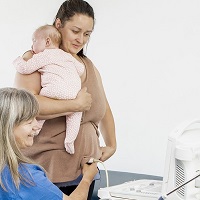Whilst pain is common it should not be accepted as a normal part of pregnancy or motherhood.
During this time pain is often focused to the pelvis. The pelvis has three main joints, the pubic symphysis, and two sacro-iliac joints. The pubic symphysis joint is at the front, between the two pubic bones.
The sacro-iliac joints are at the back, roughly where the “dimples” are at the base of the spine, between the pelvic bones and the sacrum.
What Causes it?
Whilst pain is common it should not be accepted as a normal part of pregnancy or motherhood.
During this time pain is often focused to the pelvis. The pelvis has three main joints, the pubic symphysis, and two sacro-iliac joints. The pubic symphysis joint is at the front, between the two pubic bones.
The sacro-iliac joints are at the back, roughly where the “dimples” are at the base of the spine, between the pelvic bones and the sacrum.
RICER Regime
The following advice will help you to manage or even improve the symptoms until term, and in the initial weeks following birth. After having the baby your pain usually improves dramatically over 2-4 weeks.
R is for REST
Stop activities that aggravate your pain, such as stairs, prolonged walking, sitting or standing or walks on the beach.
Avoid carrying a child on your hip (use the piggy back instead)
If standing makes you sore then stand only when necessary, and always spread your weight evenly on both feet (e.g. in queues, cooking, at work.)
Do not step over things, go around and don’t push things out of your way with your foot.
I is for ICE
If pain is disturbing sleep it is important to reduce inflammation in the joints in order to reduce pain.
To achieve this, you could try to ice the sore joints.
Place an ice pack in a wet cloth and put on your sore joints and leave it there for 20 minutes.
Try this 3-4 times a day for 3-4 days.
C is for COMPRESSION
Always wear your abdominal or pelvic support belt (if supplied) during the day. It provides extra support and compression to your pelvic joints, and will make a big difference to your pain levels. You may wear the belt in bed, if bed is particularly painful.
E is for ERGONOMICS
When in bed you may find a pillow between your legs and under your belly can be comfortable.
When you roll over in bed bend your knees, push your feet strongly into the bed away from you and lift your bottom to clear the bed.
Sit down when dressing if you have trouble standing on one leg.
Press your knees slightly together when you roll over, get in/out of bed, get in/out of car etc. (Lovemaking is still OK!!!)
Always come up off the floor in a squat with a hand on a chair, rather than by pushing up on one leg.
Use pelvic-tilting prior to moving if you expect to be sore (e.g. prior to getting out of bed or a chair.)
R is for REHABILITATION
Adopt positions that relieve your pain often during the day, your physiotherapist can you help with this.
Pilates is a wonderful way to reduce spasm in your muscles.
Aquabellies is a wonderful way to keep up your general fitness and strength, promote sleep and enhance mood.
It helps restore your posture and build up your body to cope with the increasing weight and later the demand of caring for a growing baby.
Gently draw in your tummy muscles when changing position.
Massage can reduce the spasm and help promote good sleep.
It is important to continue your rehabilitation after your baby is born
So that you can be strong enough to look after your baby and other children as they grow.
So you are able to return without pain to your chosen sporting or recreational activities that place similar load on your body.
So that you can prevent or delay recurrence of this pain in any future pregnancies.
Exercise Studio
Needs image of exercising pregnant woman
Needs link to Exercise Studio Page




